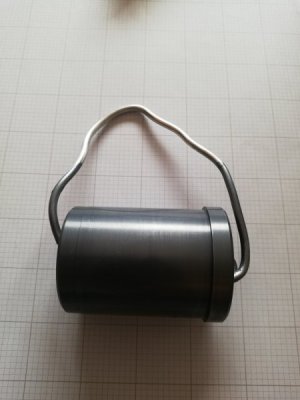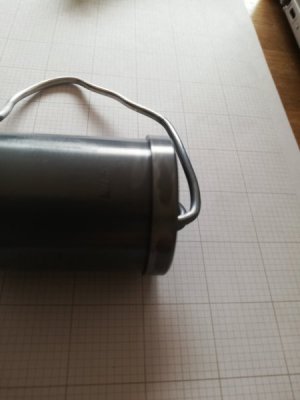Hi All,
Bit long winded so kindly bear with me.
Bought anodising kit from reputable company and set-up to the letter. Only difference I made was I bought a proper power supply from Amazon.
Ok, piece part area calculated as 0.084 sq ft / 12.09 sq inchs and using 720 calculator I determined 0.5 amps/15v for 120minutes.
Part thoroughly de-greased and etched for 30 secs in Sodium Hydroxide solution, then rinsed in de-ionised water. Part suspended with 3mm aluminium wire and cooked as described, then again rinsed in de-io.
Black dye heated to 40°C and part immersed for 20mins but straight away I can tell the dye is not taking as I'd like. Here my friends lies the problem I just can't get the part as black as night. What am I doing wrong? This is the 5th attempt and I just can't get the parts any darker than a light grey? I also notice there are some lighter patches which I cant explain as I didnt handle this at all between procedures?


Can somebody please advise your help would be invaluable and greatly appreciated. Many thanks in advance
Bit long winded so kindly bear with me.
Bought anodising kit from reputable company and set-up to the letter. Only difference I made was I bought a proper power supply from Amazon.
Ok, piece part area calculated as 0.084 sq ft / 12.09 sq inchs and using 720 calculator I determined 0.5 amps/15v for 120minutes.
Part thoroughly de-greased and etched for 30 secs in Sodium Hydroxide solution, then rinsed in de-ionised water. Part suspended with 3mm aluminium wire and cooked as described, then again rinsed in de-io.
Black dye heated to 40°C and part immersed for 20mins but straight away I can tell the dye is not taking as I'd like. Here my friends lies the problem I just can't get the part as black as night. What am I doing wrong? This is the 5th attempt and I just can't get the parts any darker than a light grey? I also notice there are some lighter patches which I cant explain as I didnt handle this at all between procedures?


Can somebody please advise your help would be invaluable and greatly appreciated. Many thanks in advance

